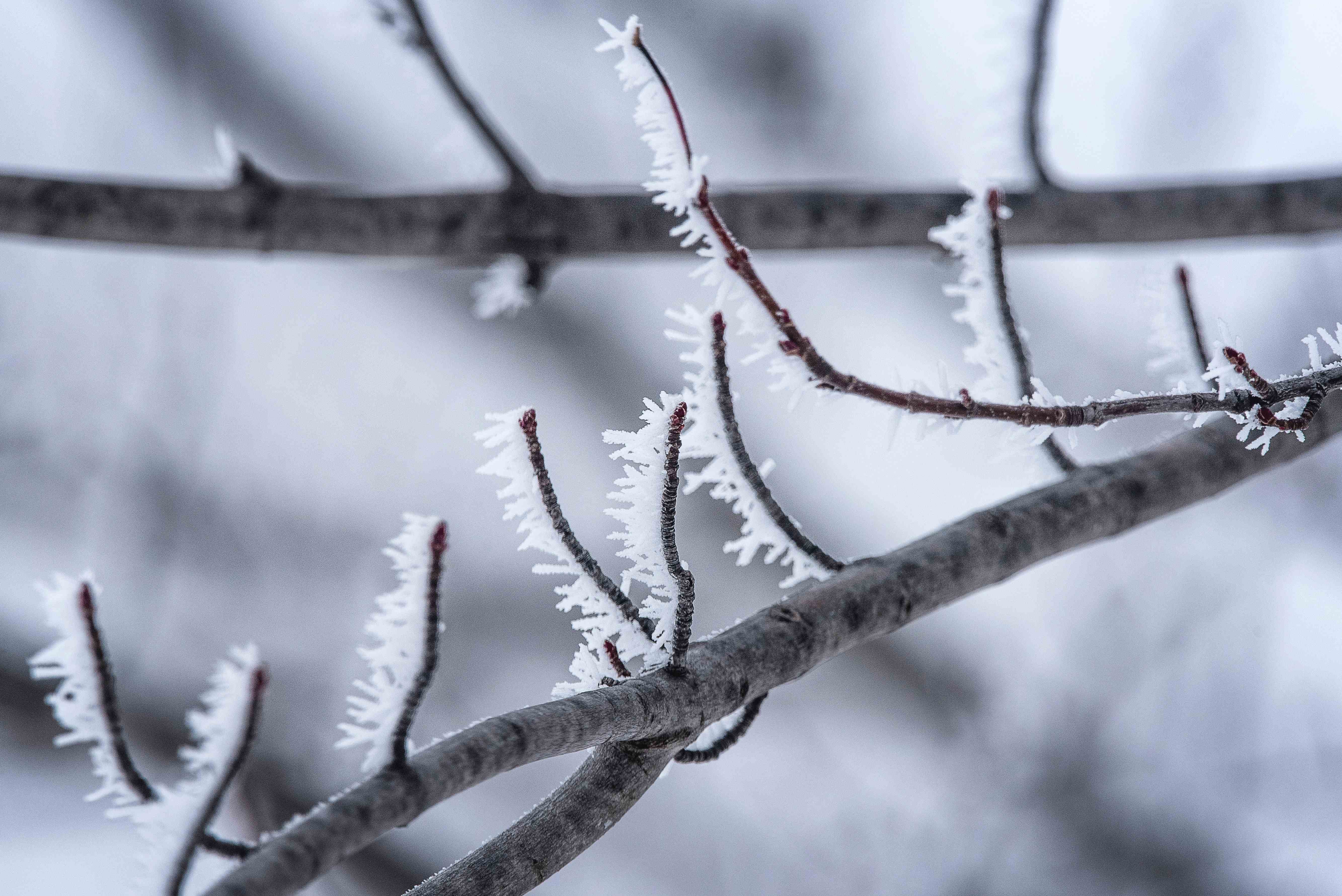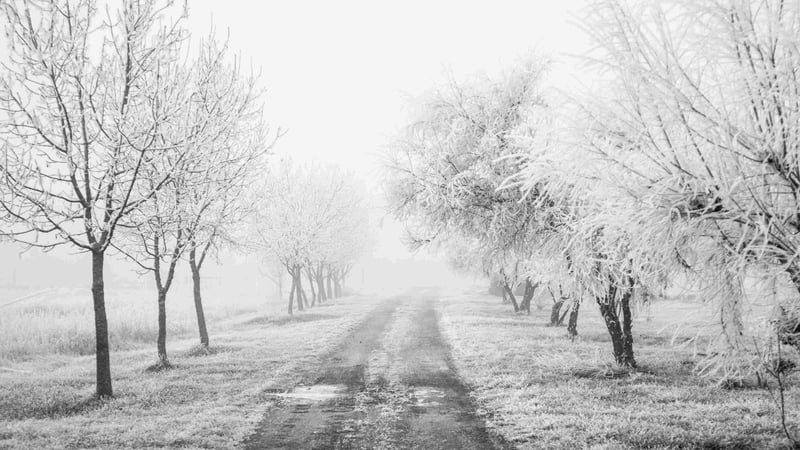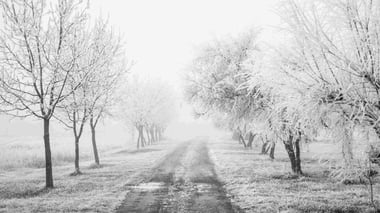We asked our climatologist Yumei Hu, PhD a couple of quick questions on the beautiful nature phenomenon hoar frost.
How does if form?
It forms under clear, cold nights in winter time. The temperature when water vapour in the air transforms into water droplets, or ice crystals, is called dew point temperature. When water vapour in the air comes into contact with an object, whose temperature is below freezing and dew point, hoar frost forms. Hoar frost forms as a result of direct desublimation, which means directly from water vapour to ice crystals, without the liquid water droplets phase.
How does it get its beautiful appearence?
Its feathery structure is due to that the freezing process is so quick that it traps air, giving it a white appearance.
Fun info (not from Yumei): The word ‘hoar’ comes from old English and refers to "old" or "grey"* and the way the ice crystals form makes it look like white hair or a beard.

How does it affect the road condition?
Hoar frost is a common and hazardous form of road slipperiness, across a road network. The presence of hoar frost reduces road surface friction and leads to slippery road conditions. This may reduce the mobility of the transport system and cause traffic accidents.
How can Klimator help the road users?
Based on machine learning, rule-based algorithms, and vast amounts of data, Klimator aims to give accurate and reliable hoar frost forecasts so road users can plan their driving. But also - to winter road maintenance engineers, who can plan maintenance activities in advance and ensure the safety and mobility of the transportation system.



